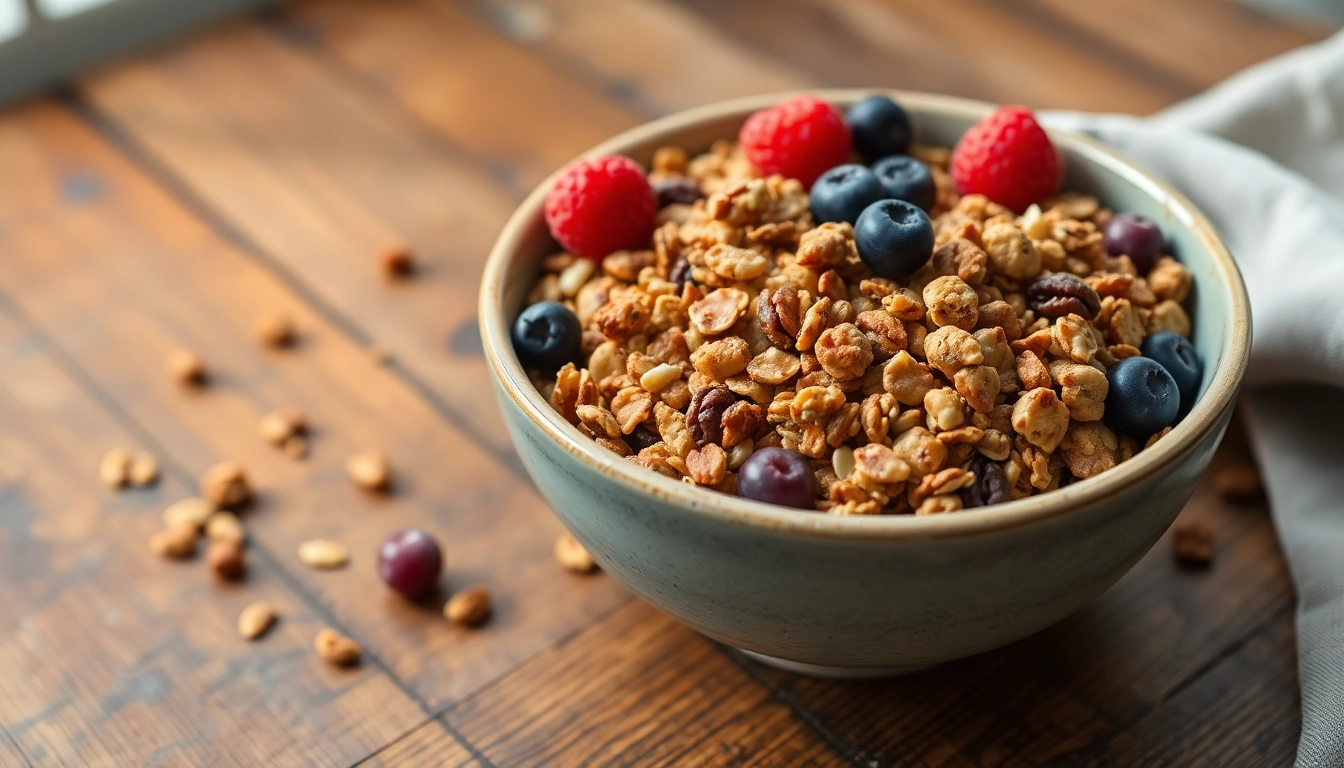What is Cinnamon Bark?
Cinnamon bark has long fascinated cultures around the globe, embracing its uses for both culinary and medicinal purposes. Derived from various species of the Cinnamomum tree, the bark is harvested, dried, and then turned into the aromatic spice we know. Among these species, Cinnamon Bark from the Cinnamomum cassia is perhaps the most well-known, celebrated for its distinct flavor and potential health benefits.
Differences between Cassia and Ceylon Cinnamon
Understanding the distinctions between cassia and Ceylon cinnamon is crucial for consumers seeking quality and health benefits. Ceylon cinnamon, also known as “true cinnamon,” is derived from the Cinnamomum verum tree. It features a light brown color, a more delicate flavor, and is generally considered the healthier choice due to its lower coumarin content, a compound that can be harmful in large quantities.
Cassia cinnamon, on the other hand, is darker, much more pungent, and has a thicker, harder texture. While cassia is predominantly used in commercial products and is widely accessible, it does contain higher levels of coumarin. This difference in chemical composition can impact both flavor and health implications, making it essential for consumers to choose wisely when selecting cinnamon.
Biological and Chemical Composition of Cinnamon Bark
Cinnamon bark is not only celebrated for its culinary applications but also its rich biochemical profile. Key components of cinnamon include essential oils, antioxidants, and various bioactive compounds that contribute to its aroma and health benefits. The primary active compound in cinnamon is cinnamaldehyde, which is responsible for its warming taste and numerous health-promoting properties.
Other notable compounds found in cinnamon bark include cinnamic acid, eugenol, and linalool, all of which have demonstrated antimicrobial and anti-inflammatory effects. Antioxidants in cinnamon, such as polyphenols, help neutralize free radicals in the body, thereby reducing oxidative stress and inflammation, which are contributors to various chronic diseases.
Historical Uses in Traditional Medicine
The medicinal use of cinnamon dates back to ancient civilizations, where it was revered for its therapeutic properties. In Egyptian medicine, it was used for embalming and to treat various ailments. Traditional Chinese medicine also utilized cinnamon for its warming properties, often prescribing it for digestive issues, menstrual discomfort, and colds.
Across the globe, many cultures have embraced cinnamon bark in their remedy arsenals, using it for its potential to manage blood sugar levels, improve digestion, and even bolster the immune system.
Health Benefits of Cinnamon Bark
Numerous studies and anecdotal evidence have illuminated the myriad health benefits of consuming cinnamon bark, making it a compelling addition to a balanced diet.
Antioxidant Properties and Effects on Health
The high antioxidant content of cinnamon bark plays a critical role in promoting health. Antioxidants combat oxidative stress by neutralizing free radicals, reducing the risk of chronic conditions such as heart disease and cancer. Research suggests that cinnamon can enhance antioxidant activity in the body and may even improve insulin sensitivity, which helps regulate blood sugar levels.
Cinnamon Bark in Digestive Health
Cinnamon bark has long been acknowledged for its role in promoting digestive health. Its carminative properties help alleviate gas, bloating, and discomfort caused by digestive upset. Some traditional remedies recommend cinnamon tea as a warming beverage to soothe gastrointestinal distress.
Moreover, cinnamon has been shown to possess antimicrobial properties, potentially inhibiting the growth of harmful bacteria in the gut and improving overall gut health.
Cardiovascular Benefits of Consuming Cinnamon Bark
Regular consumption of cinnamon bark may foster heart health by lowering levels of total cholesterol, LDL cholesterol, and triglycerides. A study published in the American Journal of Cardiology noted a significant decrease in lipid levels after incorporating cinnamon into the diet, leading to better cardiovascular outcomes. Additionally, the anti-inflammatory properties of cinnamon support overall circulatory health, reducing the risk of heart disease.
Culinary Uses of Cinnamon Bark
Cinnamon bark is a versatile ingredient that can elevate a variety of dishes, enhancing their flavor profiles while also providing health benefits.
Incorporating Cinnamon Bark into Recipes
Add cinnamon bark to your culinary repertoire by incorporating it into savory and sweet dishes alike. It can be used whole in soups and stews, allowing it to impart flavor as it simmers. Alternatively, ground cinnamon works wonderfully in baked goods, breakfast items, and beverages. Here are a few ideas:
- Cinnamon-Spiced Oatmeal: Add a stick of cinnamon while cooking your oats for a flavorful breakfast.
- Spiced Apple Cider: Simmer whole cinnamon sticks with apple cider, orange slices, and cloves for a warming drink.
- Cinnamon Chicken Marinade: Incorporate ground cinnamon into marinades for a sweet and savory flavor boost.
Infusing Flavors in Different Cuisines
Cinnamon bark is commonly featured in cuisines around the world, from Middle Eastern rice dishes to Indian curries and American desserts. Its flavor complements ingredients such as nuts, fruits, and meats, making it a versatile spice in diverse culinary applications.
In Moroccan cuisine, cinnamon is often combined with cumin and coriander to create spice blends for tagines, while in Indian cuisine, it adds warmth to masalas and is a key ingredient in garam masala.
DIY Recipes for Homemade Cinnamon Bark Products
For those interested in harnessing the benefits of cinnamon bark in a more personalized way, consider creating your own cinnamon-infused products. Here are some ideas:
- Cinnamon Tea: Steep pieces of cinnamon bark in hot water for a soothing herbal tea.
- Homemade Cinnamon Extract: Combine ground cinnamon and vodka in a jar, let it steep for several weeks, then strain for a flavorful extract.
- Cinnamon-Sugar Mix: Blend ground cinnamon with sugar for a delicious topping for baked goods.
Sourcing Quality Cinnamon Bark
When purchasing cinnamon bark, quality is essential to ensure that you receive the full spectrum of health benefits and flavor.
Identifying Authentic Cinnamon Bark
To ensure that you are purchasing authentic cinnamon, look for the botanical name on the packaging. Ceylon cinnamon should be labeled as Cinnamomum verum, while cassia will be under Cinnamomum cassia. The texture and appearance of the bark can also be indicative of its quality; Ceylon cinnamon is thinner and more fragile compared to the sturdier cassia bark.
Organic vs. Non-Organic Cinnamon Bark
Selecting organic cinnamon bark can provide additional peace of mind, as it is grown without synthetic pesticides or fertilizers. Organic cinnamon tends to have a stronger flavor profile and higher levels of beneficial compounds due to the absence of chemical interventions.
Brands and Where to Buy
Quality can vary among brands, so it’s advisable to research and read reviews before purchasing. Specialty spice shops, health food stores, and reputable online retailers often carry high-quality cinnamon. Look for brands that prioritize ethical sourcing and organic production for the best results.
Potential Side Effects and Precautions
While cinnamon bark has numerous health benefits, it is essential to consume it responsibly to avoid adverse effects.
Understanding Allergic Reactions
Some individuals may experience allergic reactions to cinnamon, especially if they have sensitivities to related spices. Common symptoms include mouth sores, skin irritations, and gastrointestinal distress. If you suspect an allergy, consult a physician and discontinue use.
Recommended Dosages for Safety
Moderation is key when incorporating cinnamon into your diet. For most people, a daily intake of 1-2 teaspoons of cinnamon (ground or bark) is considered safe. However, excessive consumption, particularly of cassia cinnamon due to its higher coumarin content, can lead to liver toxicity.
Consulting Healthcare Providers
If you are pregnant, nursing, or have underlying health conditions, it’s advisable to consult with a healthcare provider before adding significant amounts of cinnamon to your diet. They can help determine appropriate amounts and address any potential interactions with medications.



